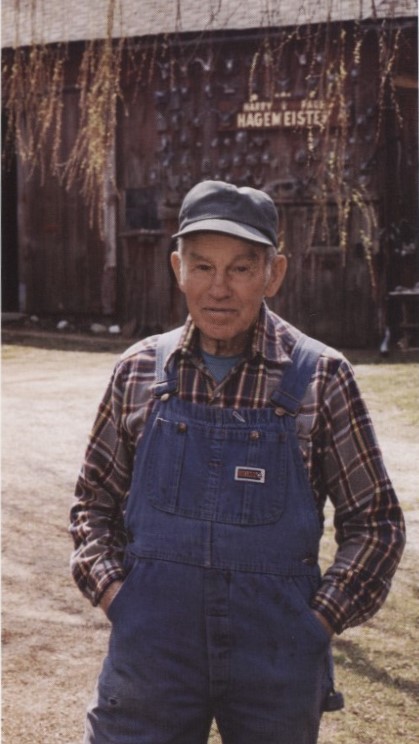Art Form: Timber-frame barn building and restoration
Location(s): Dryden (Lapeer County)
Paul Hagemeister

Portrait of Paul Hagemeister
Paul Hagemeister (1911-2010) was a master timber-frame barn builder and an advocate for barn repair, restoration, and adaptive use. In 1935, Paul began an apprenticeship with Frank Havens in the building of timber-frame barns. The skills and knowledge to build most of our rural vernacular architecture were passed on from generation to generation through such informal apprenticeships. Young men, working with fathers, uncles, or neighbors, learned a skill to be carried into the future to serve the next generation. This chain of learning began to weaken in the nineteenth century and came to a virtual halt in the early twentieth century. Changes in our society, agricultural practices, and technology made the construction of the time-honored timber-frame barns obsolete.
Only a few remain who apprenticed during the time when the last timber-frame barns were built in the 1930s and who continued in that line of work throughout their lifetime. Paul was a student of barns, knowing that by keeping an open mind he would continue to help refine and improve techniques that might make a difference in restoring or adapting timber-frame structures today. He brought young people into this line of work and taught them and is delighted at the increasing interest in rural preservation as it draws attention to farm structures, advocates adapting and reusing barns, and keeps them on the landscape.
Paul was especially notable because of his preservationist ethic and his role in the movement to keep timber framing skills and knowledge alive. Throughout his career, he taught builders and barn owners about timber framing and continues to share his experiences and knowledge with others. As a "student of barns," he refined methods and techniques to preserve and reuse more of the existing timber barns throughout the state. His efforts helped to call attention to these noble structures. Increasingly owners are encouraged to repair their barns and rural buildings, and young builders and contractors look to Pauls example for direction.
For a lifetime as master timber framer, teacher, and preservationist, Paul played an exemplary role maintaining the traditional farmstead and rural landscape of Michigan and holds a special place in Michigan architectural history.





